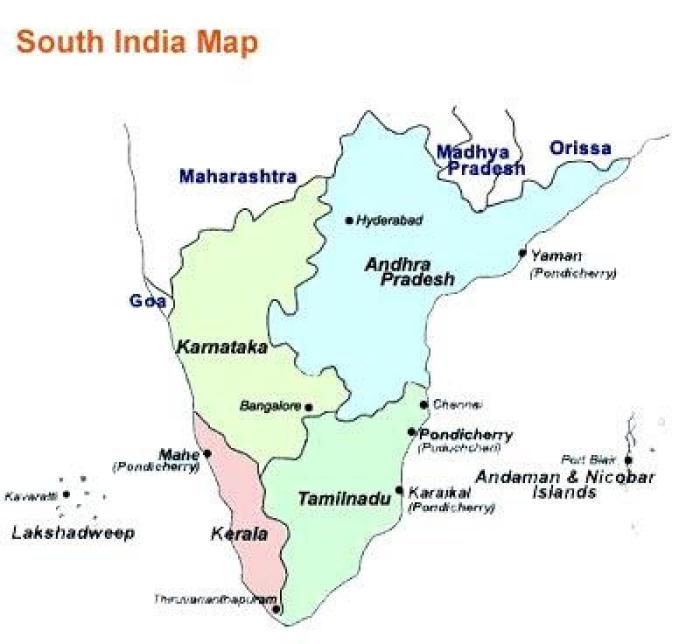Embark on an enigmatic journey through the City of South India Crossword, where ancient heritage intertwines with vibrant modernity. From the bustling streets of Chennai to the serene backwaters of Kochi, discover the captivating essence of South India’s urban tapestry.
This immersive experience unveils the historical significance, cultural diversity, economic dynamism, infrastructure advancements, and social challenges that define these vibrant metropolises. Prepare to be captivated by the rich narratives and intriguing puzzles that await you.
Historical Significance of South Indian Cities: City Of South India Crossword

South India boasts a rich tapestry of ancient cities, each bearing witness to the region’s vibrant history and cultural heritage. From the bustling metropolis of Chennai to the Nizami grandeur of Hyderabad, from the IT hub of Bengaluru to the maritime gateway of Kochi, these cities have played pivotal roles in shaping the destiny of South India.
Chennai, once known as Madras, served as the gateway to India during the British colonial era. It is home to the iconic Fort St. George, built by the East India Company in the 17th century. The city also boasts a wealth of cultural heritage sites, including the Kapaleeshwarar Temple and the Government Museum, which houses a vast collection of artifacts and historical documents.
Hyderabad, the erstwhile capital of the Nizams, is renowned for its architectural marvels. The Charminar, an iconic minaret, stands as a testament to the city’s Islamic heritage. The Golconda Fort, with its intricate carvings and massive walls, once served as the impregnable stronghold of the Qutb Shahi dynasty.
Bengaluru, formerly known as Bangalore, has emerged as a global IT hub in recent decades. However, the city’s history dates back to the 16th century, when it was founded by Kempe Gowda I. Bengaluru is home to the iconic Vidhana Soudha, the seat of the Karnataka state legislature, and the Lal Bagh Botanical Garden, a verdant oasis amidst the bustling city.
Kochi, situated on the Malabar Coast, has a rich maritime history. It was a major trading center during the spice trade era, attracting merchants from across the globe. The city is home to the Mattancherry Palace, built by the Portuguese in the 16th century, and the Jewish Synagogue, one of the oldest in the Commonwealth.
Cultural Diversity and Heritage

South Indian cities are renowned for their diverse cultural traditions and heritage. The region has been influenced by various ethnic groups, religions, and languages, resulting in a vibrant and multifaceted cultural landscape.
The presence of Dravidian, Aryan, and Islamic influences has shaped the cultural tapestry of South India. Each city has its unique blend of traditions, reflecting the region’s rich history and cultural exchange.
Traditional Arts and Crafts
South Indian cities are renowned for their traditional arts and crafts. From the exquisite bronze sculptures of Chola artisans to the intricate wood carvings of Kerala, the region’s craftsmanship showcases the skill and creativity of its people.
- Bronze Sculpting:The Chola dynasty was renowned for its bronze sculptures, depicting deities and mythical figures with intricate details and expressive postures.
- Wood Carving:Kerala’s wood carvings, known as “Aranmula Kannadi,” are intricate and depict scenes from mythology and everyday life.
- Textiles:South India is renowned for its vibrant textiles, including the silk sarees of Kanchipuram, the cotton dhotis of Tamil Nadu, and the intricate embroidery of Andhra Pradesh.
Festivals
Festivals play an integral role in the cultural life of South Indian cities. These celebrations showcase the region’s religious diversity and provide a glimpse into its rich traditions.
- Pongal:A harvest festival celebrated in Tamil Nadu, Pongal involves prayers, feasts, and traditional games.
- Onam:A harvest festival celebrated in Kerala, Onam is marked by elaborate feasts, boat races, and cultural performances.
- Dasara:A Hindu festival celebrated throughout South India, Dasara commemorates the victory of good over evil and features processions, fireworks, and cultural events.
Cuisines
South Indian cuisine is known for its diverse flavors and spices. Each city has its unique culinary traditions, reflecting the region’s varied cultural influences.
- Idli and Dosa:These are popular breakfast dishes made from fermented rice and lentils, often served with various chutneys and sambar.
- Biryani:A flavorful rice dish cooked with meat, vegetables, and spices, biryani is a popular delicacy in Hyderabad.
- Chettinad Cuisine:Known for its spicy and aromatic flavors, Chettinad cuisine is a culinary highlight of Tamil Nadu.
Economic Hubs and Industries
South Indian cities are renowned for their economic dynamism, driven by a diverse range of industries and economic sectors. Technology, manufacturing, finance, and tourism play pivotal roles in the economic development of these cities, fostering growth and prosperity.
Technology Hubs
South Indian cities have emerged as major technology hubs, attracting global tech giants and nurturing a thriving startup ecosystem. Bengaluru, known as the “Silicon Valley of India,” is home to numerous software and technology companies. Hyderabad, with its HITEC City, is a hub for IT and biotechnology.
Manufacturing Powerhouses
South India is also a manufacturing powerhouse. Chennai, the capital of Tamil Nadu, is a major automobile manufacturing center, with factories from companies like Hyundai, Ford, and BMW. Coimbatore, in the same state, is known for its textile industry, while Visakhapatnam in Andhra Pradesh is a hub for shipbuilding and steel production.
Financial Centers
South Indian cities are also significant financial centers. Hyderabad is home to the National Stock Exchange of India, while Chennai and Kochi are important banking and insurance hubs. These cities provide financial services to businesses and individuals across the region.
Tourism Destinations
Tourism is another major industry driving economic growth in South India. Cities like Chennai, Hyderabad, and Kochi attract tourists from around the world with their rich cultural heritage, historical landmarks, and beautiful beaches. Tourism generates employment opportunities and supports local businesses.
Infrastructure and Urban Development
South Indian cities have witnessed significant infrastructure and urban development initiatives aimed at enhancing connectivity, accessibility, and livability for their residents. These initiatives cover various aspects, including transportation, housing, energy, and water management.
In terms of transportation, major cities like Chennai, Bengaluru, and Hyderabad have invested heavily in expanding and modernizing their public transportation systems. Metro rail networks, bus rapid transit systems, and dedicated bus lanes have been implemented to improve connectivity and reduce traffic congestion.
Additionally, these cities are promoting non-motorized transportation by creating dedicated cycle lanes and pedestrian-friendly infrastructure.
Housing
Addressing the growing demand for affordable housing, South Indian cities have undertaken various initiatives. Slum rehabilitation projects, public-private partnerships, and the construction of affordable housing units have been implemented to provide accessible and decent housing for low-income households.
Energy
To meet the increasing energy demands of their growing populations, South Indian cities are exploring renewable energy sources. Solar and wind power projects have been commissioned to supplement traditional energy sources and reduce carbon emissions. Additionally, energy efficiency measures are being promoted to optimize energy consumption and promote sustainability.
Water Management
Water scarcity is a major challenge faced by many South Indian cities. To address this, these cities are implementing water conservation and rainwater harvesting initiatives. Desalination plants have also been constructed to provide an alternative source of potable water.
Hey, if you’re solving a crossword puzzle and need help with a clue about a city in South India, check out the big ideas math 8.2 answer key for some hints. It’s got all the solutions you need to solve your crossword puzzle and learn more about South Indian cities.
Innovative urban planning and sustainable development practices are also being adopted in South Indian cities. Smart city initiatives, involving the use of technology to improve urban services and infrastructure, are being implemented in several cities. Additionally, green building practices are being promoted to reduce the environmental impact of new developments.
Social and Environmental Issues
South Indian cities face significant social and environmental challenges, including poverty, inequality, pollution, and climate change.
Poverty and Inequality
Poverty and inequality are persistent issues in South Indian cities. Many residents live in slums or informal settlements, lacking access to basic services such as housing, sanitation, and healthcare. The gap between the rich and the poor is widening, contributing to social unrest and tension.
Pollution
Air and water pollution are major concerns in South Indian cities. Rapid urbanization and industrialization have led to increased emissions of pollutants, affecting public health and the environment. Air pollution from vehicles, industries, and construction activities poses a significant health risk.
Water pollution from industrial waste, sewage, and agricultural runoff contaminates water sources, making them unsafe for drinking and other uses.
Climate Change
South Indian cities are vulnerable to the impacts of climate change, such as rising sea levels, extreme weather events, and changing rainfall patterns. Coastal cities face the threat of flooding and erosion, while inland cities experience droughts and heatwaves. Climate change also affects agriculture, food security, and water availability, posing challenges to urban populations.
Initiatives and Programs, City of south india crossword
Various initiatives and programs have been launched to address these challenges and promote social and environmental sustainability in South Indian cities. These include:
- Slum rehabilitation programs to improve living conditions in informal settlements.
- Microfinance and skills training initiatives to empower low-income communities.
- Air and water pollution control measures, such as emission standards for vehicles and industries, and wastewater treatment plants.
- Climate change adaptation and mitigation strategies, such as building seawalls and promoting renewable energy sources.
These initiatives aim to improve the quality of life for urban residents, reduce environmental impacts, and create more sustainable and equitable cities in South India.
Tourism and Attractions
South India boasts an array of captivating tourist destinations, each offering a unique blend of cultural experiences, historical significance, and natural beauty.
From ancient temples and bustling bazaars to pristine beaches and tranquil backwaters, there’s something to captivate every traveler’s imagination.
Major Tourist Attractions and Unique Experiences
| City | Tourist Attractions | Unique Experiences | Local Delicacies |
|---|---|---|---|
| Hyderabad | Charminar, Golconda Fort, Qutb Shahi Tombs, Chowmahalla Palace | Visit the Nizam’s Museum, explore the Laad Bazaar, witness a traditional Hyderabadi wedding | Hyderabadi Biryani, Haleem, Osmania Biscuits |
| Chennai | Marina Beach, Kapaleeshwarar Temple, San Thome Cathedral, Fort St. George | Stroll along Marina Beach, visit the Government Museum, attend a Bharatanatyam performance | Idli-Sambhar, Dosa, Chettinad Chicken |
| Bengaluru | Lal Bagh Botanical Garden, Cubbon Park, ISKCON Temple, Bangalore Palace | Visit the HAL Aerospace Museum, explore the Electronic City, indulge in the vibrant nightlife | Bisi Bele Bath, Masala Dosa, Vada Pav |
| Kochi | Fort Kochi, Mattancherry Palace, Santa Cruz Cathedral, Kerala Folklore Museum | Visit the Chinese fishing nets, take a backwater cruise, participate in a traditional Kathakali performance | Appam with Stew, Karimeen Pollichathu, Puttu and Kadala |
Questions Often Asked
What is the historical significance of South Indian cities?
South Indian cities have played a pivotal role in Indian history, serving as centers of trade, culture, and political power. From the ancient empires of the Cholas and Pallavas to the modern era, these cities have witnessed countless historical events.
How diverse is the culture of South Indian cities?
South Indian cities are renowned for their vibrant cultural heritage, which is a blend of Dravidian, Aryan, and Western influences. This diversity is reflected in the region’s languages, religions, art forms, and culinary traditions.
What are the major industries driving the growth of South Indian cities?
South Indian cities are economic powerhouses, with a diverse range of industries contributing to their growth. These include technology, manufacturing, finance, and tourism.